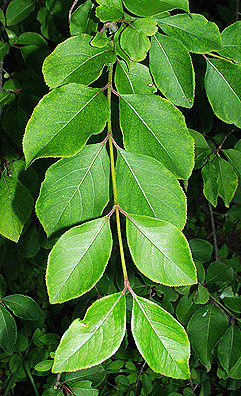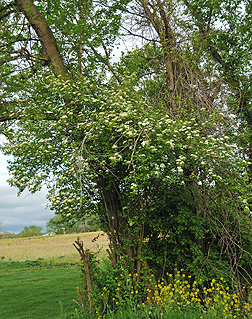Leaf: Alternate, simple, pinnately veined, oval to broadly lanceolate, 3 to 5 inches long, with a doubly serrate margin, green above, paler and fuzzy in the axils of veins and on the petiole.
Flower: Species is monoecious; males are preformed catkins, 1/2 to 1 inches long, in clusters of 3's (resemble birds toes), present throughout the winter; females appear in spring and are slender, light green catkins, 1/2 inch long, appearing or elongating (males) in spring.
Fruit: Very distinctive, resembling hops. More specifically, a 1/4 inch nutlet is enclosed in a dried, leafy, inflated sac. Several sacs hang from one stem, 1 1/2 to 2 1/2 inches long; maturing in late summer and persisting through winter.
Twig: Slender, reddish brown, smooth, and may be slightly pubescent. Male catkins present on the end of the branch; buds are small, plump ovate, and covered with green and red-brown, finely grooved (vertically) scales.
Bark: When young smooth, reddish brown, with horizontal lenticels (cherry like), later turning light brown and developing a shreddy appearance, broken into small plates or loose scales that are easily broken off with a brush of the hand.
Form: A small tree up to 40 feet tall that develops a round crown of fine branches.


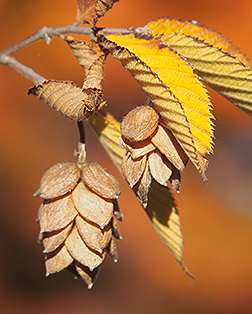
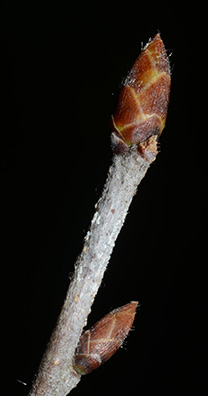
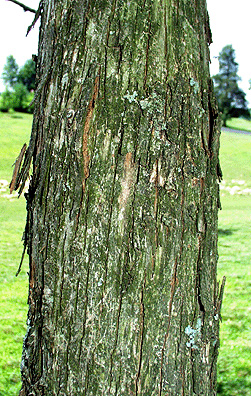


Notes:
